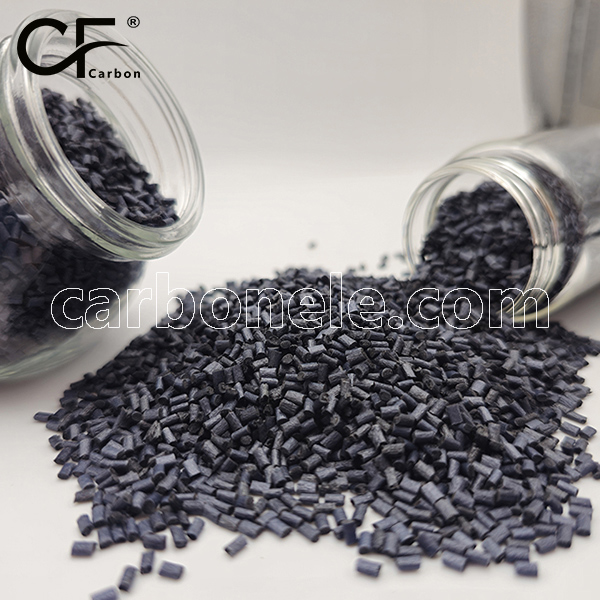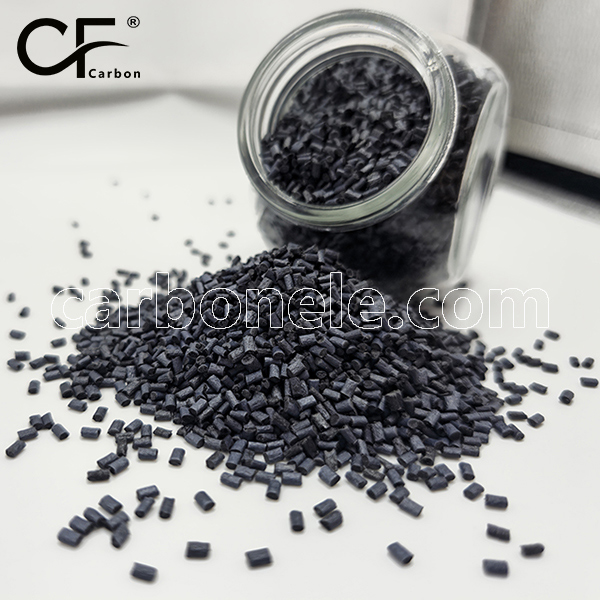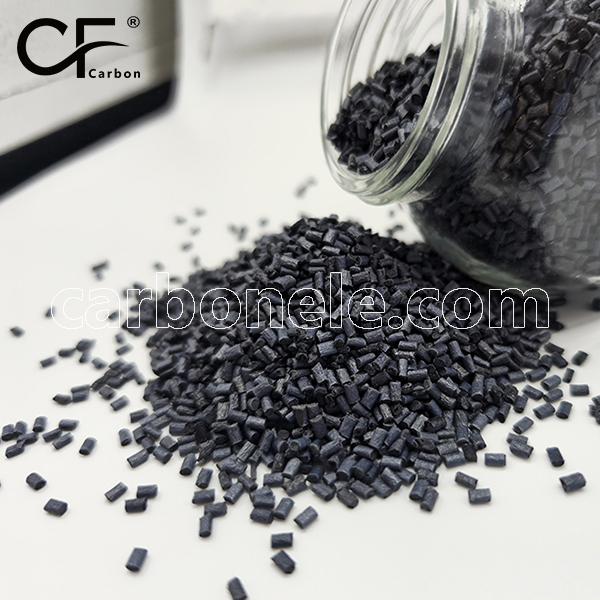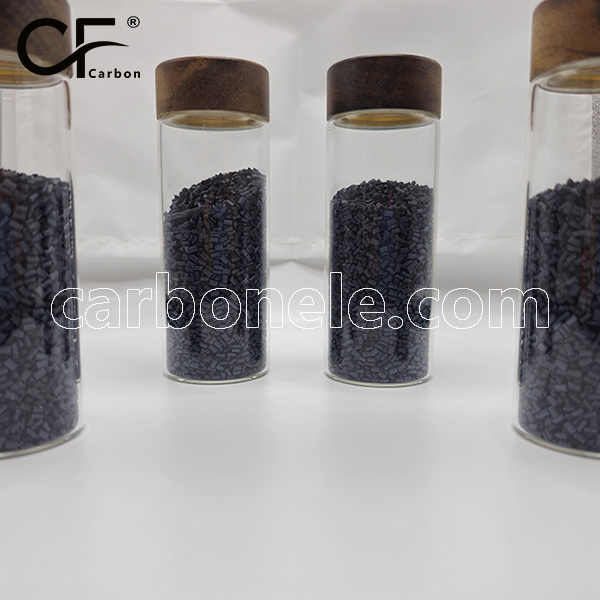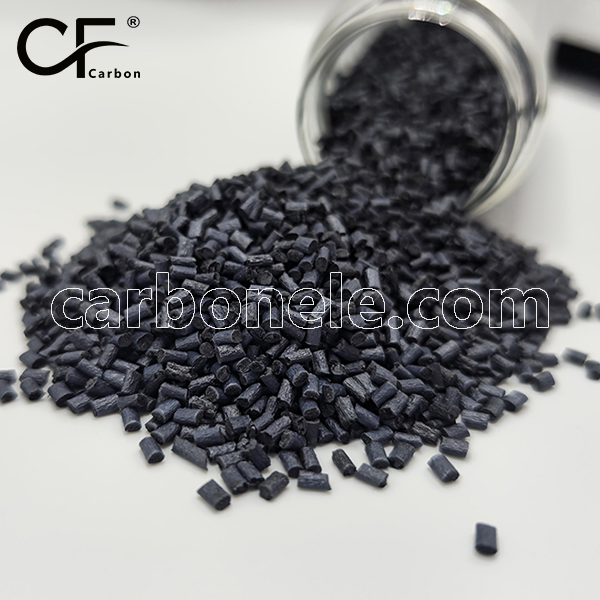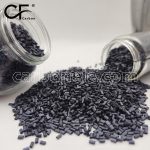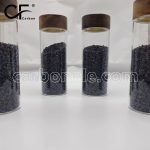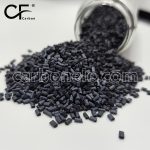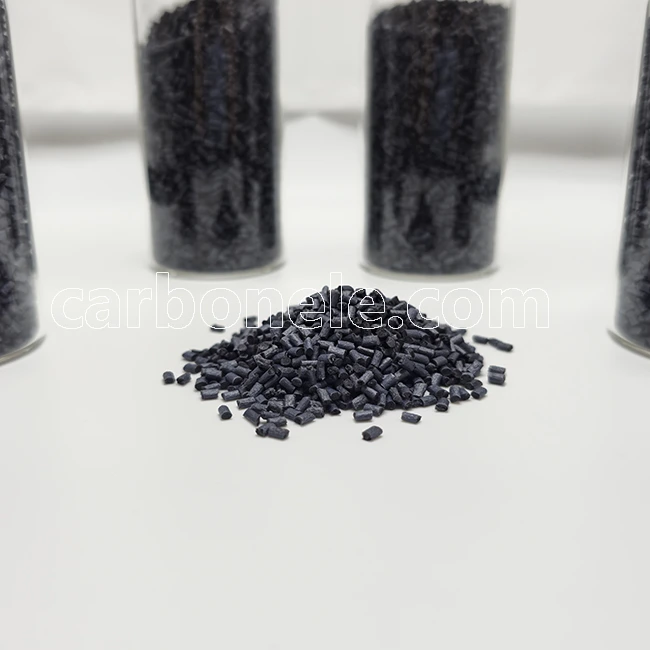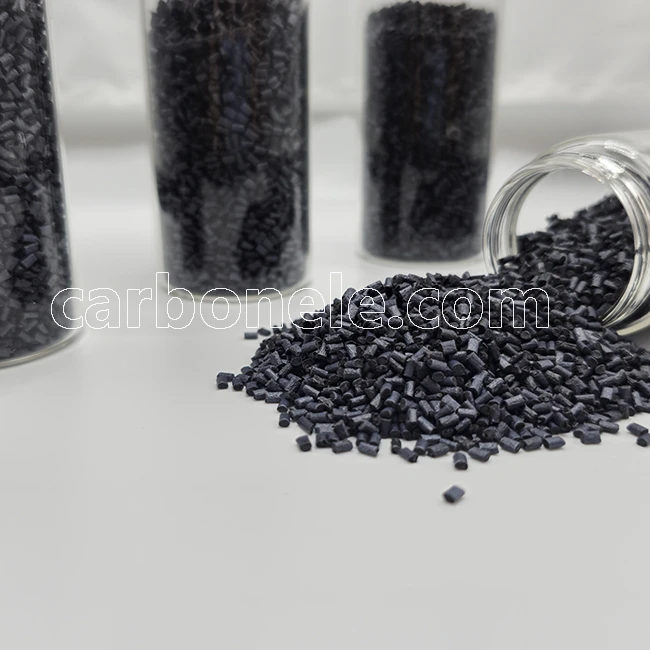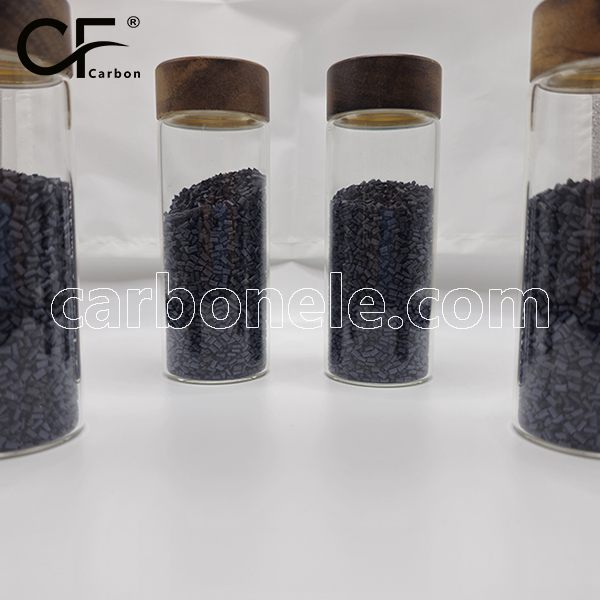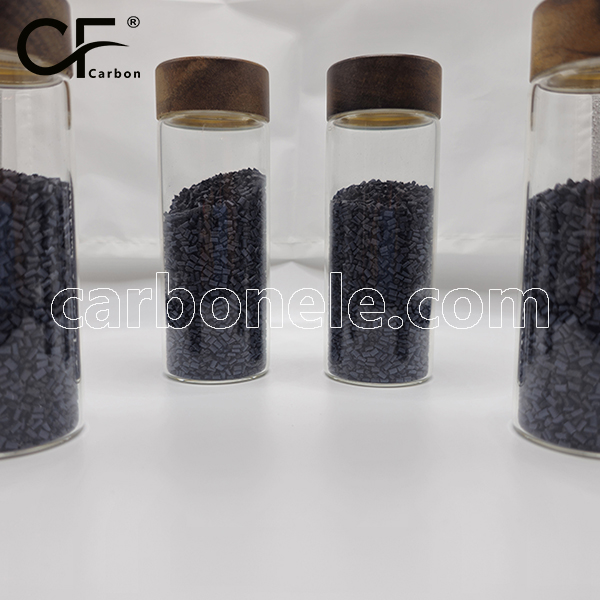
Superb PPS-CF10 10% Carbon Fiber High-Temp Parts
Discover the superb performance of PPS-CF10 with 10% carbon fiber—ideal for high-temp parts in automotive, industrial, and fluid-contact applications. High strength, great stability, and precision fit.
- Model number: PPS-CF-BCA4
- Matrix Resin: Polyphenylene Sulfide (PPS)
- Reinforcing Filler: Carbon fiber
- Appearance: Granules
- Grade: Injection/extrusion grade
- Packaging: 25kgs/bag
Superb PPS-CF10 10% Carbon Fiber High-Temp Parts
High-temperature environments demand materials that can perform consistently under stress. PPS-CF10, a high-performance thermoplastic reinforced with 10% carbon fiber, stands out for its superior thermal resistance, dimensional stability, and mechanical integrity. Whether you’re designing industrial components or precision engineering parts, this carbon fiber-enhanced PPS delivers reliable performance without compromise.
Why Choose PPS-CF10 for High-Temperature Applications
Heat Resistance Meets Mechanical Strength
PPS-CF10 is engineered to retain its structure and strength even in environments where most plastics fail. The addition of carbon fiber enhances its rigidity and load-bearing capacity, making it ideal for parts exposed to heat, friction, and mechanical stress. In sectors like automotive, electrical, or chemical processing, where performance under elevated temperatures is essential, PPS-CF10 emerges as a material of choice.
Dimensional Stability That Ensures Precision
In precision parts, thermal expansion can lead to catastrophic failures. With its low coefficient of thermal expansion and high dimensional stability, PPS-CF10 ensures that components maintain their shape and tolerance across a wide temperature range. This characteristic is especially critical in equipment where tight clearances are non-negotiable.
The Ideal Material for Fluid Contact Components
With excellent chemical resistance and minimal moisture absorption, PPS-CF10 is frequently used in applications involving exposure to aggressive fluids or steam. Pump housings, valve components, and fluid control systems benefit from the material’s resistance to degradation and structural integrity over time.
Application Spotlight – Automotive Under-the-Hood Sensor Housings
Let’s look at a real-world example. Automotive manufacturers constantly seek materials that can withstand the heat and vibration under the hood. PPS-CF10 is widely applied in the production of sensor housings due to its thermal stability and mechanical strength. These housings protect sensitive electronics in environments exposed to engine heat, oil splashes, and vibration. The carbon fiber reinforcement provides added strength while maintaining lightweight efficiency—a crucial factor in modern automotive design.
Performance in Harsh Industrial Environments
Industries such as oil and gas, semiconductor manufacturing, and heavy machinery also rely on PPS-CF10 for components like insulators, gear elements, and structural support parts. These parts face mechanical loads and temperature extremes daily. Thanks to PPS-CF10, manufacturers can ensure that performance remains stable over time, reducing maintenance cycles and increasing operational uptime.
Supporting Electrification and Lightweighting
With increasing demand for high-performance and lightweight materials in EVs and aerospace, PPS-CF10 contributes to both electrification and component miniaturization. It helps in reducing part mass while maintaining structural strength, offering a practical solution for engineers designing next-generation electric drive systems or thermal management components.
Processing Advantages of PPS-CF10
Excellent Moldability and Surface Finish
Despite its high-performance profile, PPS-CF10 remains process-friendly. It can be injection molded with relative ease, producing parts with tight tolerances and consistent finishes. Its flow characteristics allow for complex geometries and reduced cycle times, making it suitable for high-volume production.
Reinforcement Without Compromise
The 10% carbon fiber loading in PPS-CF10 provides an ideal balance. Unlike higher-filled variants, PPS-CF10 maintains adequate ductility and toughness without excessive brittleness. This makes it a great fit for parts requiring both stiffness and resilience—especially in assemblies where slight flex under stress is beneficial.
PPS-CF10—A Smart Choice for Future-Ready Designs
PPS-CF10 is more than just a high-temperature plastic. It’s a material solution for engineers and product developers aiming to push the boundaries of thermal performance and mechanical reliability. Whether you’re upgrading an existing product line or building new ones from scratch, integrating PPS-CF10 ensures your parts are future-proofed against heat, wear, and chemical exposure.
Sustainable and Reliable for the Long Run
With increasing focus on sustainability and lifecycle durability, PPS-CF10 meets the demands of both performance and longevity. Its reliability in harsh environments means fewer part failures, reduced downtime, and lower total cost of ownership—benefits that extend across industries.
Conclusion
In conclusion, PPS-CF10 offers a robust, high-performance solution for applications where traditional plastics fall short. Its carbon fiber reinforcement, heat resistance, and dimensional stability make it a go-to material for engineers facing demanding challenges. From automotive sensor housings to industrial pump parts
Friction coefficient of PPS-CF
The friction coefficient of PPS (Polyphenylene Sulfide) typically ranges from 0.3 to 0.45, while PPS-CF (Carbon Fiber Reinforced Polyphenylene Sulfide) has a lower coefficient, generally between 0.2 and 0.35. The addition of carbon fiber improves hardness, wear resistance, and reduces friction, making PPS-CF more suitable for high-load, high-temperature, and high-friction applications.
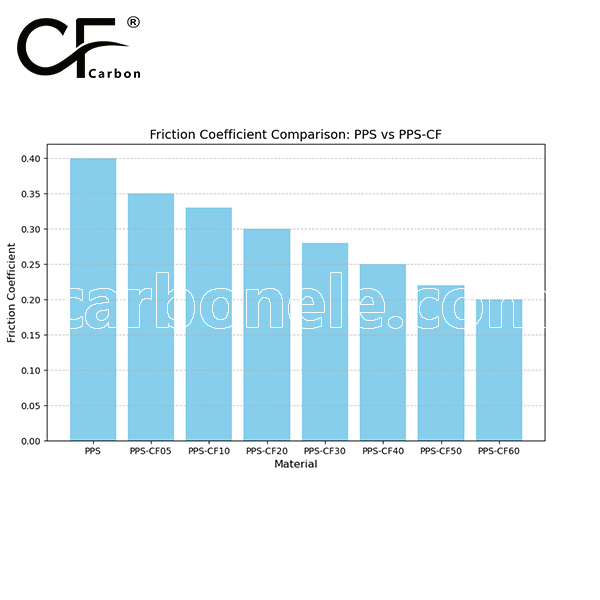
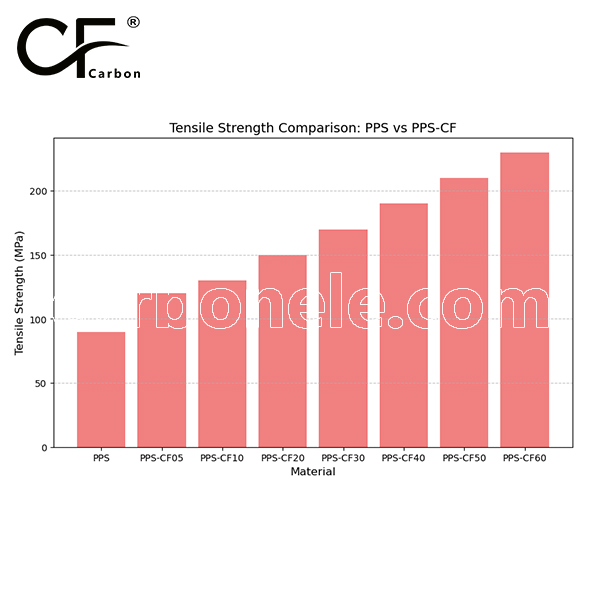

Frequently Asked Questions
Carbon (Xiamen) New Material Co., Ltd. aims to provide buyers with "one-stop" worry-free high-quality services. Here you can find all information about carbon fiber engineering plastics. If you still have questions, please send us an email for consultation!
-
How can I contact the manufacturer of a product that interests me?
When you find a product you are interested in, you can contact the manufacturer directly by sending an email and we will get back to you as soon as possible.
-
How do I find the products that interest me?
All you need to do is enter the keyword, product name in the search window and press the Enter key on your keyboard. Your search results page will then be displayed. You can also search within the product category pages on the home page. Each category is divided into subcategories, allowing you to refine your search and find products that interest you.
-
Where will I find a buying guide?
Please contact our after-sales service directly and we will provide you with a comprehensive operating guide.
-
What are CF Reinforced Thermoplastic Composites?
CF Reinforced Thermoplastic Composites are materials where carbon fibers are incorporated into a thermoplastic matrix. They combine the strength and stiffness of carbon fibers with the processability and recyclability of thermoplastics. For instance, they are used in automotive parts like bumper beams.
-
What are the benefits of CF Reinforced Thermoplastic Composites over traditional composites?
The key benefits include faster production cycles, easier recyclability, and better impact resistance. They also offer design flexibility. An example is in the manufacturing of consumer electronics casings where complex shapes can be achieved more easily.
-
How are CF Reinforced Thermoplastic Composites processed?
Common processing methods include injection molding, extrusion, and compression molding. Injection molding is widely used for mass production. For example, in the production of small components for the medical industry.
-
What industries use CF Reinforced Thermoplastic Composites?
They are utilized in aerospace, automotive, medical, and sports equipment industries. In aerospace, they can be found in interior components. In the medical field, they might be used in prosthetics.
-
How does the carbon fiber content affect the properties of the composites?
Higher carbon fiber content generally leads to increased strength and stiffness but may reduce ductility. A moderate content is often balanced for specific applications. For example, a higher content might be preferred in structural parts of a race car.
-
What are the challenges in using CF Reinforced Thermoplastic Composites?
Challenges include higher material costs, complex processing equipment requirements, and ensuring uniform fiber dispersion. Issues with adhesion between the fibers and the matrix can also arise. An example is in achieving consistent quality in large-scale production.







